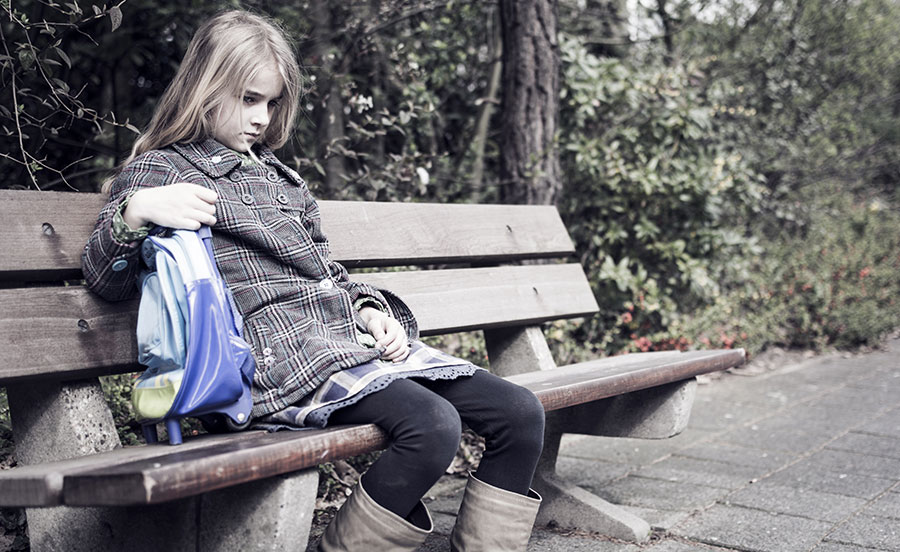October is National Bullying Prevention Month in the United States, which unites communities nationwide to address the social and psychological problem of bullying among children; in November, the United Kingdom hosts Anti-Bullying Week from November the 14th to the 25th, a week which also includes the International Stand Up To Bullying Day. In addition to his work with multiple anti-bullying organizations, author and father James Minter has chosen to address the problem of bullying through his books for children.
I am a father to two children and stepfather to three more. They are all responsible adults now and successful in their relationships and chosen careers. But watching them grow opened my generational eyes to the issues and problems they faced, the decisions they’ve made, and opportunities they’ve taken. Of course, as a parent, I always wanted to share my wisdom with my children, and offer my input when they wrestled with difficult issues. However, facing the parental dilemma of getting the balance right between giving an opinion versus interfering, led me to consider what I, or other parents, could do better to equip children for adulthood.
With hindsight, what I should have done was consciously provide them with the means to make informed, more appropriate, and more realistic decisions. This is a big task. Nevertheless, since a person’s values underly their thought processes and how they react, and respond, to situations and information, it occurred to me that if parents focus on the development of positive values at an early age, this would be a great place to start.
Such an approach was too late for my children, but since there are plenty of new parents out there who could benefit, I was motivated to write the Billy Learns About series of books. Combined with the fact I am a fiction author, and I know how positively children respond to stories, it seemed to me a traditional story book was the right vehicle to share my ideas. In addition, I am fortunate to have a great resource to call on—my wife, Maggie, a personal and business development coach, an NLP practitioner and hypnotherapist—making me ideally placed to bring these differing factors together into a series of children’s books which focus on developing positive values.
Where to start was my next issue. Up to the age of seven, children learn from their immediate family in general and parents in particular. A child of this age is focused on their survival, and on pleasing their parents. These two drivers shape their thoughts and behaviours, and what they deem important. From eight years onwards this changes. Children are more focused on exploration of the world around them, and gaining independence. But these middle-grade years are a confusing time with an abundance of conflicting information coming from a variety of sources including family, friends, peers, teachers, television, and the internet. However, the values they adopt now provide them with a framework or guidance for their journey towards young adulthood. So it follows that middle-grade years are crucial in a child’s development. At the same time, eight to eleven-year-olds are becoming independent readers and are encouraged by schools to choose reading materials for themselves. It was these considerations which led me to write for this age group.
Hundred of entries would be included on a list of positive values, but at middle-grade age, such a list would be overwhelming. With the help of Maggie, I chose eight issues which I believe are fundamental to this age group: empathy (or lack of it—bullying), pride, jealousy, lying, stealing, self-belief, the value of money, and keeping secrets.

The values that children adopt in their middle-grade years–for better or worse–provide them with a framework or guidance for their journey towards young adulthood.
Using traditional storytelling, I combined a moral or a value into the plot of my books, so that each story will move a child along the path towards being emotionally balanced and thinking positively. The stories are written to illustrate, guide, and shape a child’s understanding of the issue, and act as an icebreaker for parent-child discussions while in a safe environment.
Each book has an illustration per chapter to help the less confident reader visualize the action, and a final section, to summarize the learning goal. This makes it easier for children, parents, grandparents, or teachers to draw on the book as a resource. Over and above that, the book contains details on how to obtain a separate free colouring and activity book which aids comprehension, reinforces learning goals, and makes the reading experience more complete.
Book 1 of the series is Billy and the Bully, and it is centers on a young boy who, on his tenth birthday, receives a gift of money from his grandad. The school bully finds out and forces Billy to hand it over. The basis of the story is how Billy, his friends, and family deal with the situation.
As part of the UK’s forthcoming anti-bullying month, I’m sponsoring for the second year, via book donations of Billy and the Bully, a performance company called Actionwork Worldwide Limited. Their approach is to use theatre to get over the anti-bullying message. Headed by Doctor Andy Hickson since 1992, Actionwork tours schools with their entertaining, powerful, evocative, and thought provoking performances to engage with children and teachers to open discussions on bullying. Actionwork has a long and impressive track record in anti-bullying, producing the world’s first anti-bullying festival, and Britain’s first ever national anti-bullying conference for young people.
As part of my wider commitment to promoting the importance of developing positive values for school age children, I’m attending the Values in the Classroom conference in Oxford, UK at the end of October. This is an initiative supported by UNESCO, where I’ll be able to catch up with the latest thinking on value based education to inform my writing of the Billy series and have an opportunity to showcase the Billy Learns About books.
James will be following-up on his experiences at the Values in the Classroom in a future blog post. You can find James’ books on Amazon, and learn more about his work at jamesminter.com.



 James Minter
James Minter 